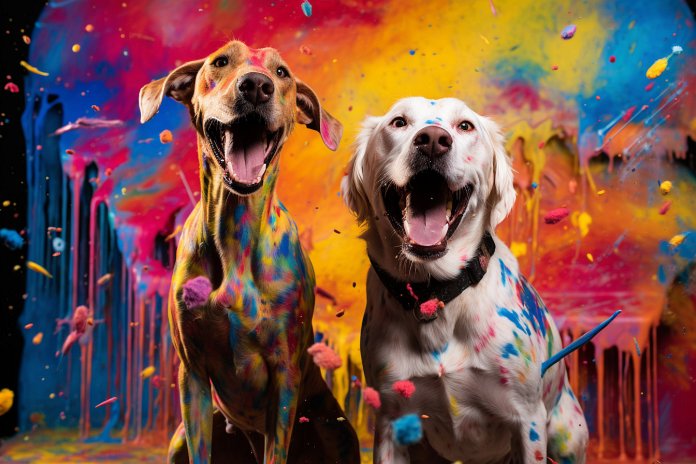
Have you ever wondered how dogs see the world? Contrary to popular belief, dogs are not colorblind. Although they don’t see the same way humans do, they can distinguish between blues and yellows. Let’s explore how dogs perceive colors and some signs that indicate their ability to see different colors.
Signs Your Dog Can Tell Colors Apart
While dogs have limited color vision, they can still differentiate between certain colors. For example, they may struggle to find a green ball in the grass but have an easier time spotting a blue or yellow ball. Dogs may also be able to distinguish between a blue and red ball, but not a red and green one. Some dogs have even been trained to sort laundry based on color.
Body Language
Dogs may exhibit certain body language signs that indicate their ability to see specific colors. These signs include staring, being alert, tilting their head, and wagging their tail.
Other Signs
Other signs that suggest a dog’s color vision include choosing toys or balls in colors they can see and losing a red ball in the grass.
History Behind Dogs Seeing Color
It was once believed that dogs were colorblind, but research conducted in 1989 proved otherwise. Dogs do have color-sensitive eyes, but their color vision is limited. This is likely due to their heritage as descendants of wolves, where the ability to see certain colors was not essential for survival.
Science Behind Dogs Seeing Color
Humans are trichromatic, meaning we have three types of light-sensitive cones in our eyes that allow us to see all colors. Dogs, on the other hand, are dichromatic, having only two types of cones. This limits their color perception to blues and yellows, while shades in the red-orange-green range are difficult for them to see. However, dogs have other visual advantages such as better night vision and the ability to detect movement.
Training Your Dog To See Colors Apart
Although you can’t teach dogs to see more colors, you can train them to differentiate between the limited colors they can perceive. Some people have successfully taught their dogs to sort laundry or toys by color. This trick requires patience and consistency.
Understanding how your dog sees the world will help you cater to their needs more effectively.
“Unlock the colorful world of your dog’s vision and discover how they perceive the world around them.”

Tips & Things to Know
1️⃣ Dogs are not colorblind: Contrary to popular belief, dogs are not colorblind. While they may not see the same range of colors as humans, they can distinguish between certain colors, such as blues and yellows.
2️⃣ Dogs can be trained to sort colors: With patience and practice, you can train your dog to sort objects based on their color. This can be done with laundry or toys, and can be a fun and interactive activity for both you and your dog.
3️⃣ Pay attention to your dog’s body language: Dogs may exhibit certain body language signs that indicate what they can see. Signs such as staring, alertness, head tilting, and wagging tail can suggest that your dog is able to see a particular color or object. Paying attention to these signs can help you understand your dog’s perception of the world.
Frequently Asked Questions, Answered ✅
1. Are dogs colorblind?
Answer: No, dogs are not colorblind. They can see a limited spectrum of colors, primarily blues and yellows.
2. What colors can dogs see?
Answer: Dogs can see blues and yellows, but have difficulty distinguishing between reds and greens.
3. Can dogs be trained to sort colors?
Answer: Yes, it is possible to train dogs to sort colors. Some people have successfully taught their dogs to sort laundry or toys by color.
4. What body language signs can indicate what colors dogs can see?
Answer: Signs such as staring, being alert, head tilting, and wagging tail may indicate that a dog can see a particular color.
5. Why can dogs see some colors but not others?
Answer: Dogs have dichromatic vision, meaning they only possess two types of light-sensitive cones. This limits their ability to see shades in the red-orange-green range. Dogs evolved to see colors that were biologically important for survival, such as prey camouflage and threat identification.